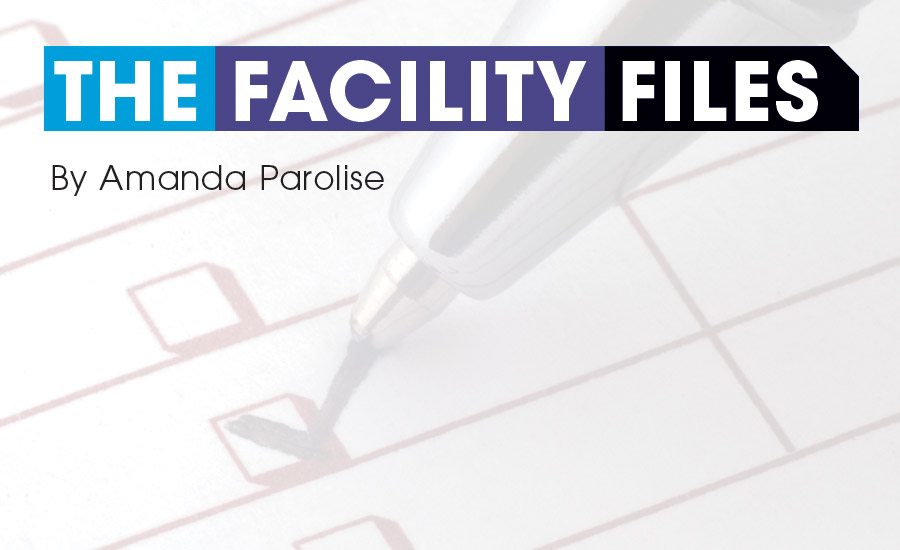This month’s B2B will focus on the renovation of the office space (not part of B2B test) and replacement of the building’s existing baseboard radiation to new overhead radiant heat panels to be installed in the ceiling around the perimeter of the single-story 40,000-sq-ft building.
The project delivery is design-bid-build (DBB), so there will be little interaction between the owner, the outsourced O&M staff, or design team and the DBB general contractor and his subcontractors. The design engineer will specify in the contract bid documents the method of data collection of equipment in a manner that will make seamless the compilation of the preventive maintenance (PM) workorders to populate the existing CMMS system to have workorders ready for day one of owner occupancy.
The building owner shall retain an owner representative as well as a 3rd-party commissioning and TAB consultant to assist in system verification and functional performance.
It would be very beneficial for the owner representative to have access to 2015 ASHRAE Handbook — HVAC Applications, chapter 3 (Commercial and Public Buildings) and 2016 ASHRAE Handbook — HVAC Systems and Equipment, chapter 6 (Radiant Heating and Cooling). In addition, the design team and the owner’s outsourced O&M project manager shall review chapters 36 through 43 (Operation and Management) and chapter 59 (HVAC Security) for design guidelines to assist in the training in the design phase.
In the design phase of the project, the owner’s O&M project manager will want to contribute information to the design team’s writing of the contract specification, and more specifically to the following activities: service contracts, parts inventory, and as-built drawings requirements. Reviewing the design documents, this individual will want to be assured that equipment serviceability will be adequate.
For a building program (as well as a business plan) to continue to successfully manage the existing building heating system and all occupant comfort within the building, it is imperative that the program includes an O&M budget in addition to the program’s construction budget.
In the construction phase, the owner’s O&M project manager will want to revisit the issues noted above during the design phase. Next comes the startup, TAB, and commissioning phases. Have the outsourced O&M staff be proactive in following along with the general contractor’s mechanical-electrical coordinator and the subcontractor’s startup personnel. O&M staff should receive equipment/system training from the heating subcontractor’s startup technician and system training using the O&M manuals and contract drawings (that will eventually become the as-built drawings).
Once the startup has been completed and the ATC subcontractor and 3rd-party commissioning and testing, adjusting, and balancing (CxTAB) consultants have completed the water balancing work, the HVAC subcontractor shall go through an automatic control system initial dry-run demonstration prior to the general contractor and his mechanical and electrical coordinator demonstrating the system to the CxTAB consultants. The ATC subcontractor should also begin collecting system performance by trending pertinent the hot water heating system and equipment data as follows:
[X] outdoor air dry bulb and wet bulb temperature [X] in-room air dry bulb and wet bulb temperature [X] primary hot water supply and return temperature [X] secondary/heating zone hot water supply and return temperature [X] ceiling surface temperature [X] alarms [X] safety control points.
Taking the same approach as the design engineering team, the owner representative shall direct the O&M personnel to use a series of computer-generated touchscreen project checklists that allow the staff to confirm that the following facility files have been collected. This process should start at the beginning of construction and not at project closeout, so that the facility files can be inputted into a CMMS wororder system. Touchscreen O&M checklists should include:
[X] equipment shop drawings [X] O&M manuals, parts list, and lubricants [X] troubleshooting tips [X] seasonal startup and shutdown instructions.
The O&M staff should review the contractor-produced piping field fabrication/field coordination drawings prior to fabrication. Touchscreen service checklists should include:
[X] location of shutoff valves, ATC valve, and balancing valve [X] circulator [X] control devices [X] access for servicing equipment.
The training process should include specific heating system and terminal equipment training. The water balancing of the radiant heat zone, along with the final TAB report, should be included in the preventive maintenance workorder system for rebalancing in a couple of years. This will require the TAB consultant to provide the water balancing reports along with the associated system flow diagrams, noting quantities and pressures for rebalancing if necessary as part of the project closeout documents. Touchscreen training checklists should include:
[X] equipment [X] system [X] automatic controls [X] energy management.



